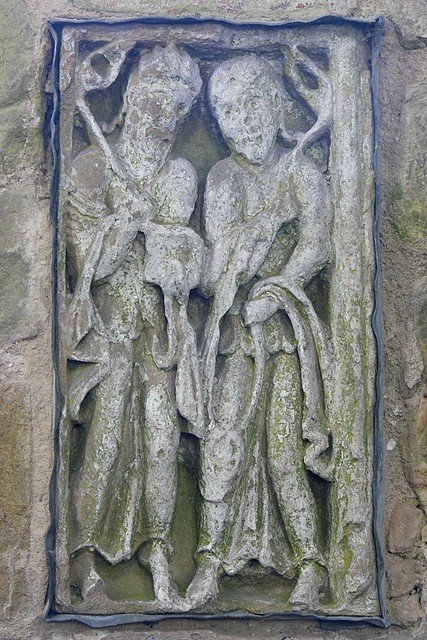Two Prophets with Leaf-Topped Rods

This relief belongs to the important group of Anglo-Saxon sculptures from Breedon-on-the-Hill, dating from the late eighth or early ninth century. Carved in local sandstone and set within a rectangular frame, it depicts two standing male figures rendered in high relief beneath an architectural arch. Both figures are shown in long, pleated garments and hold leaf-topped rods in their right hands, a detail that identifies them not as craftsmen or labourers, but as prophets or inspired teachers.
The leaf-topped rod, a common symbol in early Christian art, represents divine inspiration or authority, echoing the flowering rods of Aaron and the prophets of the Old Testament. It may also allude to the Tree of Life, a potent image of renewal and prophecy in Anglo-Saxon theology. The paired stance of the figures suggests dialogue or shared vision — perhaps evoking the tradition of the paired prophets who foretold Christ’s coming.
Stylistically, the panel is characteristic of the Mercian School of sculpture, closely related to the other Breedon friezes of Christ and the saints. The treatment of the drapery, the angular outlines, and the shallow yet powerful modeling all point to a workshop of exceptional skill, active in the Midlands around 800 CE.
These figures, once forming part of the original monastic church, exemplify the union of biblical symbolism and local artistry that flourished in Mercia’s Christian centers. Their serene frontality and symbolic gestures express both the intellectual and spiritual aspirations of the monastic community that once thrived on this hill.
